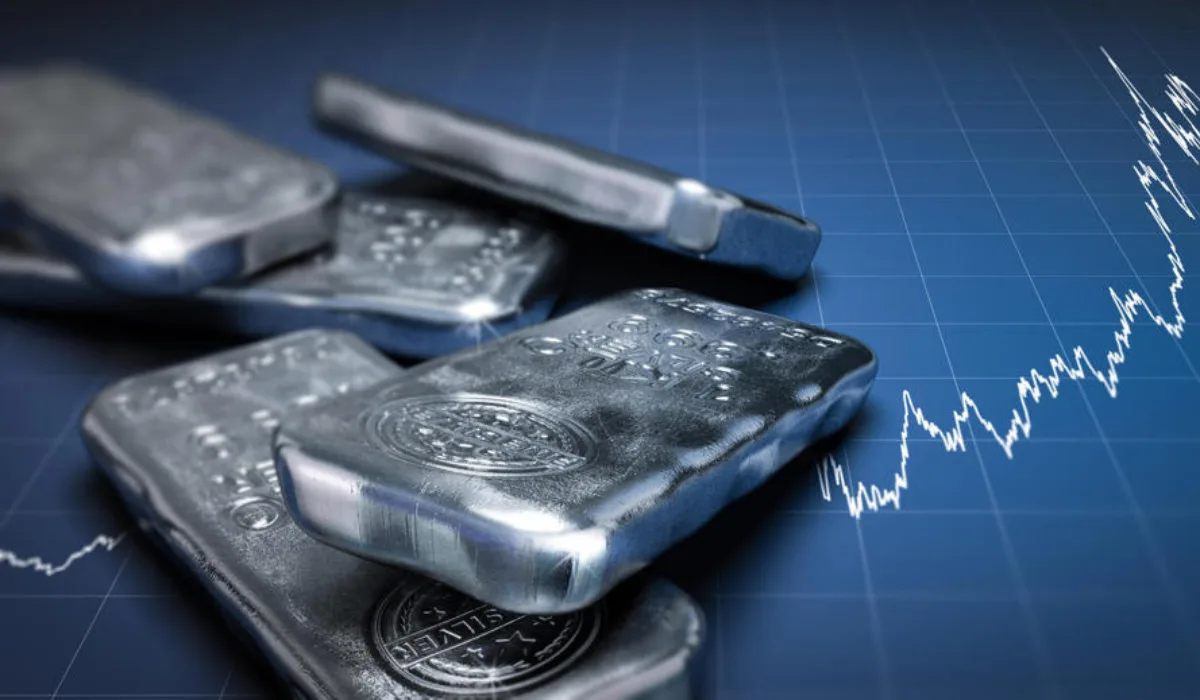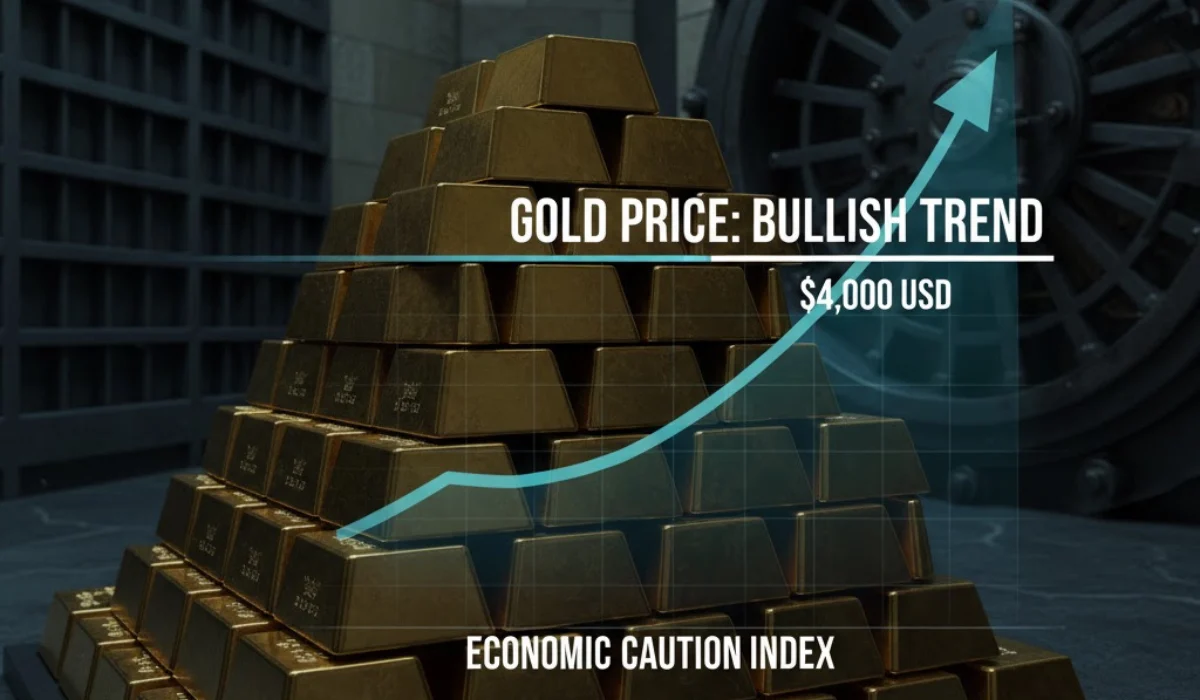A Historic Breakout in Precious Metals
Silver's ascent to $51 per troy ounce on October 10, 2025, underscores a transformative year for the precious metals sector. This milestone, unseen since the 1980 inflation-driven peak, highlights silver's resilience amid global volatility.
Traders and analysts alike point to a confluence of factors propelling this rally. From safe-haven buying to industrial consumption, silver's fundamentals align for sustained upward momentum.
As spot prices fluctuate around $49-$51 in recent sessions, the market eyes potential extensions toward $60 by year-end, per industry forecasts. This development not only boosts investor confidence but also spotlights silver's evolving role in diversified portfolios.
Understanding these dynamics requires examining the key drivers behind the surge.
The Safe-Haven Rally: Silver as Economic Hedge
In times of uncertainty, precious metals like silver emerge as reliable stores of value. The 2025 rally mirrors patterns from past crises, where investors sought refuge from stock market turbulence and currency devaluation.
Geopolitical tensions, including ongoing conflicts in the Middle East and trade disputes, have accelerated this shift. Silver's affordability compared to gold—trading at roughly one-eightieth the price—makes it an accessible alternative for retail and institutional buyers alike.
Central banks' diversification away from the U.S. dollar further bolsters demand. Reports indicate increased reserves in non-dollar assets, with silver gaining traction alongside gold. Russia's $535 million silver acquisition plan over three years exemplifies this trend.
Economic indicators, such as persistent inflation above 3% and rising U.S. government debt, reinforce silver's appeal. As tariffs loom under potential policy changes, commodities serve as buffers against import cost spikes.
This safe-haven status has driven silver's 75% year-to-date gain, surpassing gold's 51% and platinum's 80% advances.
Investor Sentiment and Market Momentum
Market sentiment toward silver has shifted decisively bullish in 2025. Trading volumes on COMEX have spiked to multi-year highs, confirming upward strength during rally days.
Analysts from ING and Zaner Metals note that silver often trails gold initially but accelerates once momentum builds. The current gold-silver ratio, hovering near 80:1, suggests silver remains undervalued relative to historical averages of 70:1.
Wall Street's pivot to hard assets reflects broader concerns over Federal Reserve independence and fiscal sustainability. Bitcoin's parallel surge underscores a flight to non-fiat alternatives, though silver's tangible utility sets it apart.
As a result, silver's breakout from $45 in September has sustained, with minimal pullbacks amid high liquidity.
Industrial Demand Fuels the Fire
Silver's price trajectory owes much to its indispensable industrial applications. Unlike gold's primarily monetary role, silver powers modern technologies, accounting for 59% of global demand in 2025.
The photovoltaic (PV) sector leads this charge, consuming over 130 million ounces annually for solar panels. Silver's superior conductivity ensures efficient energy capture, with each gigawatt of capacity requiring substantial volumes.
China's ambitious 200 GW solar installations alone demand millions of ounces, pushing global PV usage to 170-225 million ounces by year-end. Despite "thrifting" efforts to reduce silver per panel, overall deployment scales overwhelm efficiencies.
Electric vehicles (EVs) add another layer, with silver in conductive pastes and batteries. Projections show automotive silver use rising to 90 million ounces, driven by higher safety standards and electrification mandates.
Electronics and 5G infrastructure further elevate needs, as silver enables compact, high-performance components in smartphones and servers.
Solar Power's Unyielding Pull
The green energy transition cements silver's industrial primacy. Solar PV demand has tripled since 2014, now comprising 14-17% of total silver consumption.
Innovations like perovskite cells may initially cut usage, but their scalability could reverse this by requiring more panels for equivalent output. Global solar capacity targets of 3,500 GW by 2028 ensure escalating needs.
In the U.S., incentives under the Inflation Reduction Act spur domestic production, indirectly boosting silver imports. Europe's REPowerEU plan similarly accelerates PV adoption, straining global supplies.
This sector's growth, projected at 20-25% annually, positions silver as a cornerstone of sustainable energy infrastructure.
Data Centers and Tech Expansion
Emerging tech frontiers amplify silver's relevance. AI-driven data centers, like those from Amazon and Google, integrate silver for cooling systems and high-speed interconnects.
The antimicrobial properties of silver also find use in healthcare wearables and biotech, with demand rising 10-15% in these niches. Nanotechnology applications in computing further embed silver in next-gen devices.
As 5G networks expand, silver's role in antennas and switches grows, contributing to a 5-7% uptick in electronics fabrication. These trends underscore silver's shift from commodity to critical material.
Persistent Supply Deficits: The Tightening Squeeze
A structural mismatch between supply and demand underpins silver's 2025 surge. The market enters its fifth consecutive deficit year, with 2025 projected at 117-149 million ounces—down 19-21% from 2024 but still historically significant.
Mine production, stagnant at 819-830 million ounces, fails to match consumption. As a byproduct of lead-zinc and copper mining, silver output ties to base metals' fortunes, limiting responsiveness to price signals.
Key producers like Mexico and Peru face operational hurdles, including regulatory delays and labor issues. Chile's 8.8 million ounce drop exemplifies regional challenges.
Recycling provides partial relief, rising 24% to 195 million ounces via improved scrap recovery from electronics and solar waste. Yet, this covers only a fraction of the gap.
Mining Constraints and Global Output
Global silver mine supply grew modestly by 0.9-3% in 2025, reaching an 11-year high of 1.05 billion ounces total. However, primary silver mines contribute just 25-30%, with byproducts dominating.
Exploration budgets lag, and new projects face 10-15 year timelines amid environmental scrutiny. Bolivia and Australia's gains offset declines elsewhere, but overall inelasticity persists.
Above-ground stocks, including COMEX vaults at 320 million ounces, offer short-term buffers but deplete under sustained demand. LBMA holdings at 1.2 billion ounces signal vulnerability to drawdowns.
Recycling's Limited Lifeline
Secondary supply from recycling hit records in 2025, fueled by higher prices incentivizing returns. Industrial scrap, particularly from PV modules, yields 40-50% of recycled volumes.
Efficiency gains in processing end-of-life products help, but collection rates remain below 30% globally. Emerging markets' informal recycling poses quality risks, capping reliable inflows.
While vital, recycling cannot fully offset deficits, ensuring price support as industrial users compete with investors.
Investment Avenues: ETFs and Beyond
Exposure to silver's rally comes in varied forms, with exchange-traded funds (ETFs) leading accessibility. Inflows hit highest levels since 2020, reflecting institutional embrace.
Physical holdings via bars or coins suit long-term holders, avoiding storage hassles through allocated vaults. Mining equities offer leveraged plays but carry operational risks.
ETFs blend convenience and liquidity, tracking spot prices with low fees.
Top Silver ETFs Performing in 2025
The iShares Silver Trust (SLV) dominates, surging 68% year-to-date with $15 billion in assets. Backed by physical bullion, it mirrors spot movements closely.
ProShares Ultra Silver (AGQ) delivers 2x leveraged exposure, ideal for short-term trades amid volatility. Its 0.95% expense ratio suits aggressive strategies.
Sprott Physical Silver Trust (PSLV) combines physical holdings with miners, posting 25% returns since January launch.
Global X Silver Miners ETF (SIL) focuses on producers, up 40% on operational leverage. Aya Gold & Silver weighs heavily at 7.61%.
These vehicles democratize silver investing, with diversified options for risk profiles.
| ETF Name | YTD Return (2025) | Expense Ratio | Key Focus |
|---|---|---|---|
| iShares Silver Trust (SLV) | 68% | 0.50% | Physical Silver |
| ProShares Ultra Silver (AGQ) | 120% (leveraged) | 0.95% | 2x Spot Price |
| Sprott Physical Silver Trust (PSLV) | 25% | 0.59% | Physical + Miners |
| Global X Silver Miners (SIL) | 40% | 0.65% | Mining Equities |
Future Outlook: Projections and Risks
Analysts forecast silver averaging $55 by December 2025, with highs to $64 amid deficit persistence. Long-term, $100 scenarios emerge if industrial growth accelerates.
Bullish catalysts include rate cuts boosting liquidity and green tech expansions. Bearish risks encompass economic slowdowns curbing industrial use or resolved geopolitics easing safe-haven flows.
The gold-silver ratio's compression could propel silver further, aligning with production ratios near 1:10.
Sustained deficits and demand diversification position silver for multi-year strength.
Navigating Volatility Ahead
Traders should monitor COMEX inventories and PV installation data for signals. Diversification across metals mitigates single-asset risks.
As 2025 unfolds, silver's dual-market dynamics promise rewarding opportunities for informed investors.



